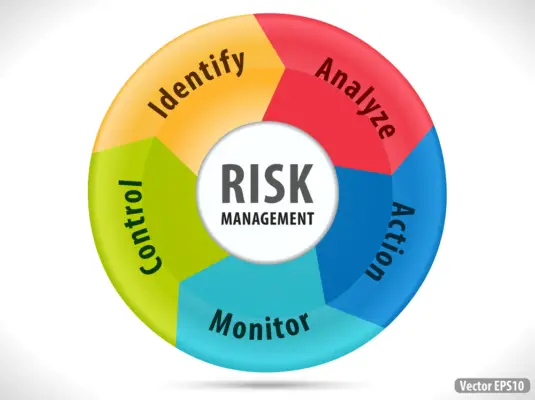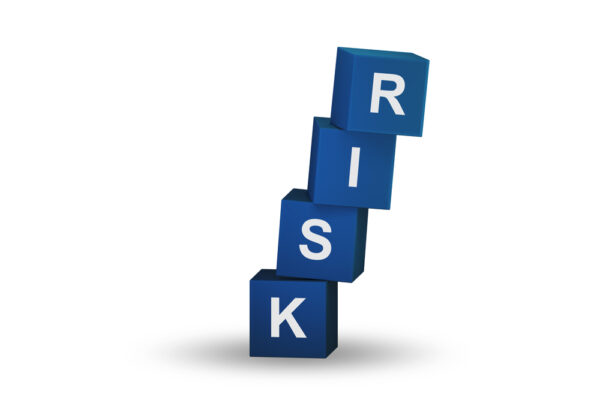A Compliance Risk Assessment Tool is a software application or system that assists organizations in identifying, assessing, and managing compliance risks.
These tools are designed to streamline the risk management process, making it more efficient and effective. Here’s how a compliance risk assessment tool can help streamline your risk management process:
- Automated Risk Identification: The tool can automatically identify risks based on the organization’s industry, operations, and regulatory requirements, reducing the need for manual research and data collection.
- Risk Evaluation and Prioritization: It allows for the systematic evaluation of risks based on predefined criteria such as likelihood, impact, and velocity. This helps prioritize risks that require immediate attention.
- Integrated Regulatory Updates: Compliance tools often include features that provide updates on regulation changes, ensuring that the organization’s risk assessments remain current with the latest compliance obligations.
- Control Mapping: The tool can map identified risks to existing controls to assess their effectiveness and identify areas where additional controls are needed.
- Reporting and Dashboards: Advanced reporting capabilities and dashboards offer real-time insights into the organization’s compliance status, making it easier to communicate with stakeholders and make informed decisions.
- Document Management: The tool can be a centralized repository for all compliance-related documents, including policies, procedures, and assessment reports, facilitating easy access and management.
- Workflow Automation: Automating workflows for risk assessment processes ensures that tasks are completed promptly and that nothing falls through the cracks.
- Action Plan Tracking: The tool can track the progress of action plans created in response to identified risks, ensuring that remediation efforts are completed.
- Continuous Monitoring: Many tools offer continuous monitoring of the risk environment, allowing for the early detection of potential compliance issues.
For example, LogicManager is a risk assessment tool that provides a comprehensive suite of features for enterprise risk management, including compliance risk assessment capabilities. Similarly, OneTrust offers a range of compliance and risk management solutions that can help streamline the risk assessment process.
A compliance risk assessment tool is a software solution that helps organizations identify, assess, and mitigate potential risks associated with their operations.
It is an essential component of an effective compliance program that enables organizations to manage regulatory compliance, reduce the risk of legal liabilities, and improve overall business performance.

Understanding compliance risk is critical for organizations operating in highly regulated finance, healthcare, and energy industries.
Failure to comply with regulatory requirements can result in severe consequences, including financial penalties, reputational damage, and legal liabilities.
A compliance risk assessment tool can help organizations identify potential risks, evaluate the likelihood and impact of those risks, and develop effective strategies to mitigate them.
Key Takeaways:
- A compliance risk assessment tool is a software solution that helps organizations identify, assess, and mitigate potential risks associated with their operations.
- Compliance risk assessment is critical for organizations operating in highly regulated industries to manage regulatory compliance, reduce the risk of legal liabilities, and improve overall business performance.
- A compliance risk assessment tool can help organizations identify potential risks, evaluate the likelihood and impact of those risks, and develop effective strategies to mitigate them.
Understanding Compliance Risk
Compliance risk is the potential for an organization to violate laws, regulations, policies, or ethical standards that may result in legal action, financial penalties, or reputational damage.
Compliance risk is a significant concern for organizations of all sizes and industries. Identifying, assessing, and mitigating compliance risks is crucial to ensure that an organization operates within legal and ethical boundaries.
Defining Compliance Risk
Compliance risk refers to the risk that an organization may fail to comply with laws, regulations, policies, or ethical standards that apply to its operations.
Compliance risk can arise from various sources, such as government regulations, industry standards, contracts, and internal policies. The consequences of non-compliance can be severe, including fines, lawsuits, and reputational damage.
Compliance risk assessment is the process of identifying, analyzing, and evaluating the risks associated with non-compliance. It involves a comprehensive review of an organization’s compliance landscape, including its policies, procedures, and controls. The assessment helps to identify areas of potential risk and develop strategies to mitigate them.
The Importance of Risk Management
Risk management is a critical component of compliance risk assessment. It involves identifying, assessing, and prioritizing risks and implementing strategies to mitigate them.
Effective risk management can help organizations avoid or reduce the impact of compliance failures.
Risk management involves several steps: identification, assessment, mitigation, and monitoring. The risk identification process involves identifying potential risks associated with non-compliance.
The risk assessment process involves evaluating the likelihood and impact of each risk. The risk mitigation process involves developing and implementing strategies to reduce the likelihood or impact of each risk.
The risk monitoring process involves ongoing monitoring and evaluation of the effectiveness of risk mitigation strategies.
In conclusion, compliance risk is a significant concern for organizations of all sizes and industries. Effective compliance risk assessment and risk management are essential to ensure that an organization operates within legal and ethical boundaries.
Organizations must identify, assess, and mitigate compliance risks to avoid or reduce the impact of compliance failures.

Key Components of a Compliance Risk Assessment
A compliance risk assessment is a vital tool for organizations to identify, analyze, and evaluate potential compliance risks that they may face.
The compliance risk assessment process consists of three key components: Risk Identification, Risk Analysis, and Risk Evaluation.
Risk Identification
The first step in the compliance risk assessment process is identifying potential risks an organization may face. This step involves gathering information about the organization’s business activities, processes, and procedures that could lead to compliance risks.
The risk identification process should involve a cross-functional team that includes individuals from various departments and levels within the organization.
Organizations can use various tools such as surveys, questionnaires, and checklists to identify potential compliance risks. These tools can help organizations to identify areas where they may be vulnerable to compliance risks.
Once the risks have been identified, the organization can move on to the next step in the process.
Risk Analysis
The next step in the compliance risk assessment process is to analyze the identified risks. This step involves determining the likelihood and impact of each risk.
Organizations can use various tools such as risk matrices, decision trees, and probability analysis to analyze the risks.
The risk analysis process should involve a cross-functional team that includes individuals from various departments and levels within the organization.
This team should work together to determine the likelihood and impact of each risk, as well as the potential consequences of each risk.
Risk Evaluation
The final step in the compliance risk assessment process is to evaluate the identified risks. This step involves determining the significance of each risk and developing a plan to mitigate or manage the risks.
The risk evaluation process should involve a cross-functional team that includes individuals from various departments and levels within the organization.
Organizations can use various tools to evaluate risks, such as scoring, ranking, and prioritization. These tools can help organizations determine the significance of each risk and develop a plan to mitigate or manage the risks.
In conclusion, a compliance risk assessment is critical for organizations to identify, analyze, and evaluate potential compliance risks.
The compliance risk assessment process consists of three key components: Risk Identification, Risk Analysis, and Risk Evaluation.
Organizations can develop a comprehensive compliance risk management program by following key components. This can help mitigate or manage potential compliance risks.
Compliance Risk Assessment Process
Compliance risk assessment is a crucial process that helps organizations identify, evaluate, and mitigate potential risks.
It is an ongoing process that should be performed periodically to ensure that the organization complies with relevant laws and regulations.
The process involves three main stages: planning and preparation, conducting the assessment, and reviewing and reporting.
Planning and Preparation
The first stage of the compliance risk assessment process is planning and preparation. This stage involves defining the scope of the assessment, identifying the compliance requirements that apply to the organization, and determining the resources required to perform the assessment.
The organization should also identify the key stakeholders involved in the assessment and establish communication channels to ensure everyone is aware of the assessment process.
During this stage, the organization should also define the assessment methodology and develop a risk assessment plan.
The plan should include a list of the compliance requirements that will be assessed, the assessment criteria, and the assessment schedule. The plan should also identify the roles and responsibilities of the stakeholders involved in the assessment process.
Conducting the Assessment
The second stage of the compliance risk assessment process is conducting the assessment. This stage involves collecting and analyzing data to identify potential compliance risks. The organization should use various methods to collect data, including interviews, surveys, and document reviews.
During the assessment, the organization should evaluate its existing controls’ effectiveness and identify gaps in its compliance program.
The organization should also evaluate the likelihood and impact of each potential risk and prioritize the risks based on their severity.

Reviewing and Reporting
The final stage of the compliance risk assessment process is reviewing and reporting. This stage involves reviewing the assessment results and reporting the findings to the relevant stakeholders.
The organization should develop a report summarizing the assessment results, identifying the key compliance risks, and providing recommendations to mitigate the identified risks.
The report should also summarize the assessment methodology, data sources, and criteria. The relevant stakeholders should review the report to reflect the assessment results accurately.
The organization should also develop an action plan to address the identified compliance risks and monitor the implementation of the plan.
In conclusion, the compliance risk assessment process is essential for organizations to identify and mitigate potential compliance risks.
Organizations can effectively manage compliance risks by understanding them and developing controls. The process also provides reporting capabilities that enable organizations to communicate their compliance status to relevant stakeholders.
Regulatory Compliance and Laws
Compliance risk assessment tools are essential for any organization that wants to avoid legal and financial penalties. Laws and regulations constantly change, and keeping up with all the requirements can be challenging. Here are some of the key areas where compliance risk assessment tools can help:
Understanding GDPR
The General Data Protection Regulation (GDPR) is a regulation in the European Union (EU) that governs data protection and privacy for all individuals within the EU.
The regulation is designed to protect the privacy of EU citizens and give them control over their personal data. Compliance risk assessment tools can help organizations understand the requirements of GDPR and ensure that they comply with the regulation.
Navigating Healthcare Regulations
Healthcare regulations are complex and constantly changing. Compliance risk assessment tools can help healthcare organizations stay up-to-date with the latest regulations and ensure they provide high-quality patient care. These tools can also help healthcare organizations identify potential risks and take steps to mitigate those risks.
Adapting to Regulatory Changes
Regulatory changes can be challenging for organizations to navigate. Compliance risk assessment tools can help organizations adapt to regulatory changes by identifying potential risks and providing guidance on how to comply with new regulations.
These tools can also help organizations stay up-to-date with the latest regulatory changes and comply with all applicable laws and regulations.
Compliance risk assessment tools are essential for any organization that wants to avoid legal and financial penalties.
These tools can help organizations understand GDPR, navigate healthcare regulations, and adapt to regulatory changes. By using these tools, organizations can ensure they comply with all applicable laws and regulations and avoid potential risks.
Compliance Programs and Policies
Compliance programs and policies are essential for any organization to meet its regulatory and ethical obligations.
A compliance program is a set of policies, procedures, and practices designed to ensure that an organization complies with all relevant laws and regulations. Developing internal policies is a crucial component of a compliance program.
Developing Internal Policies
Internal policies should be developed to ensure all employees understand the organization’s expectations. These policies should be designed to prevent violations of laws, regulations, and ethical standards.
Policies should be clear and concise, outlining the expectations of the organization and the consequences of non-compliance.
Internal policies should be reviewed regularly to ensure they are up-to-date and reflect changes in laws and regulations.
Employees should receive regular training on these policies to ensure they know their obligations and non-compliance consequences.
Establishing Ethical Practices
Establishing ethical practices is another important component of a compliance program. Ethical practices should be designed to ensure that the organization operates with integrity and transparency.
These practices should be designed to prevent conflicts of interest and ensure that the organization operates in the best interests of its stakeholders.
Ethical practices should be communicated clearly to all employees, and employees should receive regular training on these practices.
Employees should be encouraged to report any violations of these practices, and the organization should have a process to investigate and address any reported violations.
Compliance programs and policies are essential for any organization to meet their regulatory and ethical obligations.
Developing internal policies and establishing ethical practices are two critical components of a compliance program. Organizations should regularly review and update their policies and practices to ensure they are up-to-date and effective in preventing non-compliance.
Tools and Systems for Compliance Management
Compliance management is a crucial aspect of any organization, and it involves ensuring that the company adheres to regulatory requirements. Companies can use various tools and systems to manage compliance effectively.
Compliance Management Software
Compliance management software is a popular tool used by organizations to manage compliance. This software provides a centralized platform for managing all aspects of compliance.
It enables organizations to track compliance requirements, assess risks, and manage compliance activities. The software also provides real-time monitoring and reporting capabilities.
One of the benefits of compliance management software is that it eliminates the need for manual processes, which can be time-consuming and prone to errors.
It also ensures that compliance activities are consistent across the organization. Some popular compliance management software includes Onspring, LogicGate, and ZenGRC.
Utilizing Checklists and Spreadsheets
Checklists and spreadsheets are other tools that companies can use to manage compliance. Checklists are simple tools that provide a list of tasks that must be completed to ensure compliance.
They are useful for managing routine compliance tasks, such as employee training and document management.
On the other hand, spreadsheets are more complex tools that can be used for managing compliance data. They provide a structured way of organizing compliance data, such as risk assessments and audit findings.
Spreadsheets can also track compliance activities, such as policy reviews and employee training.
While checklists and spreadsheets are useful tools, they have limitations. For instance, they can be time-consuming to maintain, and they are prone to errors.
Additionally, they do not provide real-time monitoring and reporting capabilities, which can be crucial for managing compliance effectively.
Companies can use various tools and systems to manage compliance effectively. Compliance management software provides a centralized platform for managing compliance activities, while checklists and spreadsheets help manage routine compliance tasks and organize compliance data.
Companies should choose the right tools based on their specific needs and requirements.

Monitoring and Auditing
Compliance risk assessments are only the first step in managing compliance risks. Continuous monitoring and conducting compliance audits are equally important to ensure that the organization complies with applicable laws and regulations.
Continuous Monitoring
Continuous monitoring involves reviewing the organization’s operations to identify potential compliance risks. This can be achieved through compliance risk assessment tools, such as compliance management software, to identify and track potential risks in real-time.
These tools can also help organizations monitor their compliance with specific regulations, such as HIPAA or GDPR, and provide alerts when there are potential violations.
In addition to using compliance risk assessment tools, organizations can establish an audit trail to track compliance-related activities.
An audit trail is a record of all compliance-related activities, including who performed the activity, when it was performed, and what the outcome was. This can help organizations to identify potential compliance risks and take corrective action before a violation occurs.
Conducting Compliance Audits
Compliance audits are formal reviews of an organization’s compliance with applicable laws and regulations. These audits can be conducted internally or by external auditors.
A compliance audit aims to identify potential compliance risks and ensure that the organization follows established policies and procedures.
Auditors will review the organization’s operations, policies, and procedures during a compliance audit to identify potential compliance risks.
They will also review the audit trail to properly document all compliance-related activities. If potential compliance risks are identified, the auditors will recommend corrective action.
Continuous monitoring and compliance audits are critical components of an effective compliance risk management program.
Organizations can avoid legal and financial consequences by identifying and correcting compliance risks.
Data Privacy and Protection
Data privacy and protection are critical areas for compliance risk assessment tools. The tools must ensure that patient data is safeguarded and supplier compliance is assessed to meet regulatory requirements.
Safeguarding Patient Data
Compliance risk assessment tools must ensure patient data is handled with the utmost care. The tools should provide a secure environment for storing and sharing patient data.
Encryption and access controls must be in place to protect the data from unauthorized access or theft.
In addition, compliance risk assessment tools must ensure that patient data is used only for the intended purpose. The tools should monitor data usage and flag any suspicious activities.
The tools must also provide an audit trail to track data usage and access.
Assessing Supplier Compliance
Compliance risk assessment tools must also assess supplier compliance to protect patient data. The tools should provide a framework for evaluating supplier compliance with regulatory requirements.
The tools must also ensure suppliers know their responsibilities and obligations.
The compliance risk assessment tools should also provide a mechanism for monitoring supplier compliance. The tools should track supplier performance and flag any non-compliance issues.
The tools must also provide a mechanism for remediation and resolution of non-compliance issues.
In summary, compliance risk assessment tools must ensure that patient data is safeguarded and supplier compliance is assessed to meet regulatory requirements.
The tools should provide a secure environment for storing and sharing patient data and ensure that patient data is used only for the intended purpose.
The tools must also assess supplier compliance and provide a mechanism for monitoring and remedying non-compliance issues.
Mitigating Risks and Liabilities
Compliance risk assessments are critical in identifying and analyzing non-compliance risks with laws, regulations, standards, and ethical norms. However, identifying risks is the first step in mitigating risks and liabilities.
Organizations must develop an action plan and establish remediation and response procedures to minimize legal liability, financial penalties, and reputation damage that may arise from compliance failures.
Developing an Action Plan
After identifying compliance risks, organizations should develop an action plan that outlines the necessary steps to mitigate risks.
The action plan should prioritize risks based on their potential impact on the organization and allocate resources accordingly. The plan should also establish timelines and responsibilities for implementing risk mitigation measures.
To ensure the effectiveness of the action plan, organizations should involve all relevant stakeholders, including compliance officers, legal counsel, and senior management. This will ensure the comprehensive action plan addresses all possible compliance risks.

Remediation and Response
Despite best efforts, compliance failures may still occur. Organizations need to establish remediation and response procedures to minimize the impact of compliance failures.
Remediation measures may include correcting non-compliance issues, reviewing and updating policies and procedures, and training employees.
Response procedures should establish clear communication channels to inform all relevant stakeholders of the compliance failure.
The response plan should also outline the steps to mitigate the impact of the compliance failure on the organization’s reputation and financial position.
Compliance risk assessments are critical in identifying and analyzing compliance risks. However, it is equally important to develop an action plan and establish remediation and response procedures to mitigate risks and liabilities.
Organizations that take a proactive approach to compliance risk management will be better positioned to avoid compliance failures and minimize their impact.
Benefits and Challenges of Compliance Risk Assessments
Compliance risk assessments are a critical component of any organization’s compliance program. They help identify potential compliance risks, assess the likelihood and impact of those risks, and develop strategies to mitigate them. However, compliance risk assessments also come with their own set of challenges that organizations must address.
Realizing the Benefits
The benefits of compliance risk assessments are numerous. By conducting a compliance risk assessment, organizations can:
- Identify potential compliance risks: Compliance risk assessments help organizations identify risks arising from their operations, policies, or procedures.
- Develop effective risk management strategies: Compliance risk assessments provide organizations with the information they need to develop effective risk management strategies that can help mitigate potential risks.
- Avoid non-compliance: By identifying potential compliance risks, organizations can avoid non-compliance with applicable laws and regulations.
- Reduce financial penalties: Compliance risk assessments can help organizations reduce the risk of financial penalties resulting from non-compliance.
Addressing the Challenges
While compliance risk assessments offer many benefits, they also come with their own set of challenges. Some of the challenges organizations may face when conducting a compliance risk assessment include:
- Lack of resources: Conducting a compliance risk assessment can be resource-intensive, requiring significant time and effort from compliance and other staff.
- Difficulty in assessing likelihood and impact: Assessing the likelihood and impact of potential compliance risks can be challenging, particularly when it comes to emerging risks or risks that are difficult to quantify.
- Limited scope: Compliance risk assessments may not cover all potential compliance risks, particularly those that are poorly understood or arise from external factors.
- Incomplete or inaccurate data: Compliance risk assessments rely on accurate and complete data to be effective. If data is incomplete or inaccurate, the assessment may not accurately reflect the organization’s compliance risks.
Compliance risk assessments are critical for organizations looking to identify and mitigate potential compliance risks.
While they come with their own challenges, organizations that can effectively conduct compliance risk assessments can realize numerous benefits, including avoiding non-compliance and reducing the risk of financial penalties.
Stakeholder Engagement and Training
Involving Stakeholders
Stakeholder engagement is a necessary part of compliance risk assessment, especially when there is uncertainty or ambiguity concerning a risk.
Efforts to assess, evaluate, manage, and communicate the risk must account for stakeholders’ perceptions, concerns, and opinions. Stakeholders can include employees, customers, shareholders, regulators, and other interested parties.
Involving stakeholders in the compliance risk assessment process can provide actionable insights and recommendations that can improve the effectiveness of the process.
Organizations can use various tools and techniques, such as surveys, focus groups, and interviews, to involve stakeholders in the compliance risk assessment process.
These tools can help organizations identify the concerns and opinions of stakeholders and incorporate them into the compliance risk assessment process.
It is important to ensure that the stakeholders represent the organization’s diverse interests and that their input is considered in the assessment process.
Implementing Effective Training
Effective training is essential for ensuring that employees understand the compliance risk assessment process and their role in it. Training should be designed to provide employees with the knowledge and skills they need to identify and manage compliance risks effectively.
Organizations can use various training methods, such as e-learning, classroom, and on-the-job training to deliver compliance training.
Training should be tailored to the organization’s and its employees’ specific needs. It should be interactive, engaging, and relevant to the employees’ roles and responsibilities.
Organizations can use case studies, simulations, and other interactive tools to make the training more effective.
Organizations should also provide ongoing training and support to employees to ensure they remain up-to-date with the latest compliance requirements and best practices.

This can include refresher training, coaching, and mentoring. By providing effective training, organizations can ensure that employees have the knowledge and skills to manage compliance risks effectively.
Stakeholder engagement and effective training are critical components of compliance risk assessment. By involving stakeholders in the process and providing employees with the necessary training, organizations can improve the effectiveness of their compliance risk assessment process and mitigate compliance risks.

Chris Ekai is a Risk Management expert with over 10 years of experience in the field. He has a Master’s(MSc) degree in Risk Management from University of Portsmouth and is a CPA and Finance professional. He currently works as a Content Manager at Risk Publishing, writing about Enterprise Risk Management, Business Continuity Management and Project Management.

